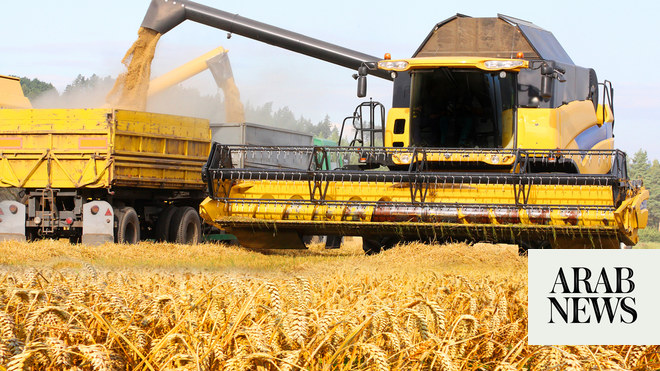
Maize, wheat and soybeans will experience the biggest drop in annual growth
Livestock and fish production to grow at a slower rate of 1.3 percent annually, while milk production growth is expected at 1.5 percent annually
RIYADH: With the middle-income countries seeing slower growth in demand, the global trade in agricultural commodities is estimated to grow at 1.3 percent annually, half the recorded pace in the past decade, according to a UN report.
In their 2023-2032 outlook, the Food and Agriculture Organization of the UN and the Organization for Economic Cooperation and Development stated that maize, wheat and soybeans will experience the biggest drop in annual growth despite being the highest contributor to trade in the past decade.
The expansion of livestock and fish production is expected to grow at a slower rate of 1.3 percent annually over the next decade. Poultry meat is projected to account for nearly half of the overall increase in total meat production by 2032.
With regard to milk production, the report said that a 1.5 percent annual growth is forecast globally over the next 10 years.
India and Pakistan will play a significant role, contributing to over half of the increase and accounting for approximately one-third of the global milk output in 2032.
However, milk production in the EU is projected to experience a slight decline due to the ongoing shift toward more environmentally sustainable production systems.
South and Southeast Asia are expected to experience a surge in net imports of agricultural commodities, continuing the trend of becoming net importers in recent years. The region’s strong demand growth is the primary driver behind this projection.
Meanwhile, sub-Saharan Africa is projected to witness a nearly doubled trade deficit in major food items by 2032, largely due to rapid population growth outpacing other regions.
On the other hand, Latin America anticipates an expansion of its agricultural trade surplus by 17 percent, with the exported share of agricultural production projected to reach 40 percent by 2032.
North America is expected to maintain its position as the second-largest exporter of agricultural commodities globally, although its net export position may be slightly impacted by robust domestic consumption growth.
Agricultural emissions to increase by 7.5%
The report further projected that global direct agricultural emissions are set to increase by 7.5 percent over the coming decade.
Livestock production is expected to contribute to 80 percent of the overall increase in greenhouse gas emissions.
The majority of these emissions are projected to occur in middle- and low-income regions, primarily due to the higher growth in ruminant production, which tends to have higher emission intensity.
In addition, synthetic fertilizers play a significant role in direct greenhouse gas emissions. Factors such as high energy prices, domestic policies, and market access developments will influence the global use of fertilizers, leading to potential shifts in their usage patterns.












